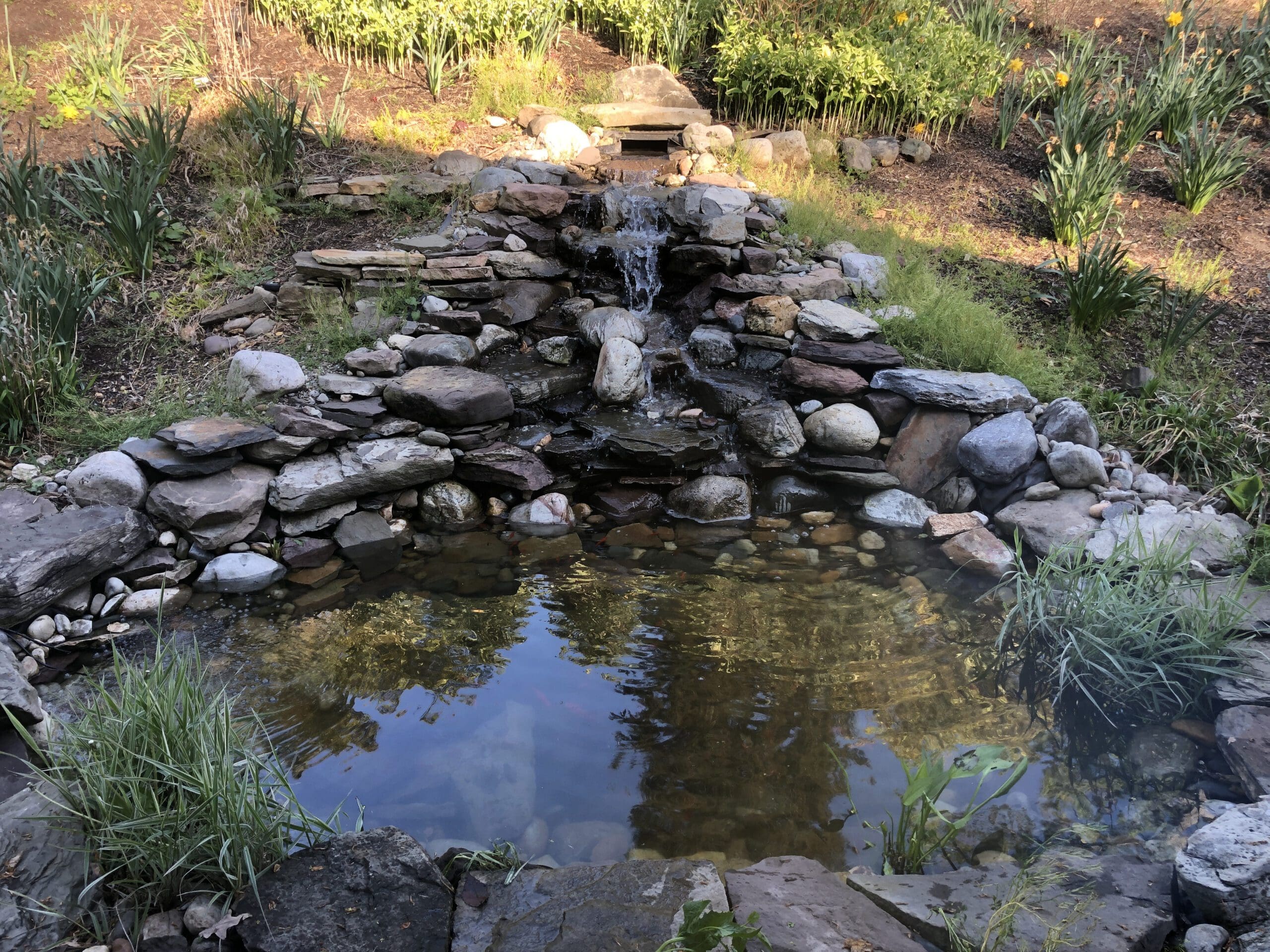While the fall season is most notable for painting the landscape with beautiful shades of red, yellow, and orange, this colorful season may also turn cause brown pond water–which is not quite as pretty. But not to worry, there is a logical explanation for this color change. Read on to find out why your pond turns brown and what you can do about it.
Brown or “tea-colored” water is a common occurrence when trees and bushes lose their leaves in autumn. These leaves and other organic debris contain tannins, which are brown biomolecules. When leaves fall into your pond, the brown tannins are released into the water, creating the tint. An excessive build-up of debris on the pond floor can also create brown pond water. This is caused when leaves and debris sink to the bottom of the pond, decay, and turn into sludge. This sludge is then stirred up by fish, spreading the brown tint across the pond.
In order to treat your brown water problem properly, you first need to know whether the discoloration is caused by tannins or sludge. We have a test you can try and all you need is a small glass or mason jar from your kitchen!
Brown Pond Water Test
Fill your glass or jar with your brown pond water and set it to stand undisturbed for 24 hours. When you return, if the water is clear with sediment settled at the bottom, then you’re dealing with a sludge problem. On the other hand, if the water is still brown after 24 hours and there are no signs of sediment, then your problem is with tannins tinting your water. In both instances, the discoloration is caused by an overabundance of organic matter. To keep brown water from recurring, you’ll want to remove any floating debris or organic matter that may be resting on the bottom of your pond.
How to Fix the Problem
You can apply a sludge-fighting water treatment such as Clean for Ponds, Pond Sludge Remover Packs, or Sludge & Filter Cleaner. You can also remove sludge from the bottom by hand (some pond owners enjoy any excuse to get in the pond).
Tea-colored water caused by tannins can be treated with Clear for Ponds or Activated Pond Carbon which work quickly to remove discoloration.
The best way to combat brown pond water is to prevent the problem from happening in the first place. Debris management is essential. A mechanical pond skimmer is critical for sweeping your pond surface free of fallen leaves and sticks. Remember to check the skimmer basket more frequently during the fall season and empty it as needed. This just takes a few seconds out of your day.
As you see debris accumulating around the edges of your pond, simply remove it with your hands. Also keep a watchful eye for leaves that may get caught or hide beneath lily pads or other floating aquatics. In this case, the debris will never reach the skimmer and ultimately fall to the bottom of your pond, creating sludge. A few minutes of your time is all it takes to ensure clean and healthy pond water and you’ll greatly reduce the possibility of your pond water turning brown. Contact us for more information.






